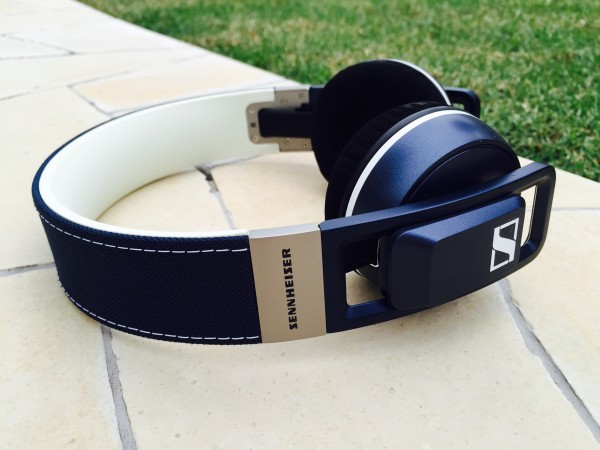The premise behind Sennheiser’s Urbanite series is to bring performance and style together in a compact package, a departure from their usual no-nonsense looks and audiophile focus.
The Urbanite we have today is the on-ear variant of the series. An over-ear version in the form of Urbanite XL will take up more space but offer better comfort and sound isolation.
Design and Ergonomics
The royal blue review set exudes elegance with its canvas-like surface and stitching on the headband. The canvas meets a metallic badge printed with the Sennheiser and Urbanite branding. Its classiness should please many without drawing unnecessary attention.
The cushioning over the ear cups is soft and comfortable, though I would have preferred the over-ear Urbanite XL simply because my ears will hurt less after extended use. This does not affect its sound isolation qualities, however, which keeps most ambient noise out.
The underside of the headband may be rubbery and lightly padded, but I still experienced some discomfort after having them on for half an hour or so. At least adjusting the fit on the Urbanite will not result in clipped hair – the ear cup shifts along a track located behind, and not above, itself.
Pushing the ear cups all the way up allows them to be folded and transported in an included carry pouch. Props to Sennheiser for devising an innovative solution to adjusting and carrying the set of headphones around.
Performance
Sennheiser advertises the Urbanite series as being huge on bass performance, but my experience tells me the sound is more balanced than what is claimed, though with a bias towards richness rather than clarity.
Tracks big on low frequency, such as Silent Shout by The Knife, offered rounded, controlled thumps without over-emphasising the low-end. It will satisfy those seeking a balanced sound, but listeners who prefer stronger bass will be better served elsewhere, perhaps a product from Beats.
Typical pop tracks with a mix of low and mid ranges sounded good overall as a package, with a little sub-bass to add some punch to the listening experience. My only complaint would be the treble rendition is more conservative due to its emphasis on lows, making things sound a little muffled.
Classical music lacked the shrill clarity that they should be known for. The violins and trumpets were less bright than I would have liked them, causing lower-frequency sound waves like those from the bass clarinets to become more pronounced.
The Urbanite connects to your device via a flat 3.5mm cable that runs from the left ear cup and incorporates a microphone and buttons for picking up calls and for volume adjustment. During my test, the other party was able to hear me without distortion.
Conclusion
At the end of the day, the Urbanite has been engineered to suit a certain kind of listening profile – the everyday listener seeking a little more bass in his or her music without going all out for a headache-inducing experience. If this describes you and you have room in your budget for a pleasant-looking and well-built S$269 device, go for it.






